I am making sculptural, chirping bird circuits as part of a larger work in progress. Technically speaking, the circuit below (as seen inside of the transparent mylar bird) is an analog electronic chirp generator with a light-sensitive resistor. All of the electronic components are discrete -- no software or recordings. Notice how its chirp quality changes according to the amount of light seen by the photo-resistors. When the lighting conditions are favorable, the circuit sings "pretty bird." As you can see in the first video, the bird does not always change its song when I cover its photoresistor. That's because I have an LED coupled to the sensor -- so when the LED is turned on at various points during the oscillating cycle, my actions are irrelevant (because the photoresistor "sees" light from the LED).
Below is a video of another electronic bird sitting on a coffee cup at my bench.
My art is about the spark of life and what creates it. Therefore, I do not want to hide my electronics in a box: my circuits are meant to be seen. Yet, as an artist who makes work for exhibition, I need to protect the delicate parts from years of dust, audiences, and transportation. Using techniques from paper crafting, I came up with a way to make a sculptural transparent shell. I also devised a method to stabilize my freeform soldering onto a transparent Mylar substrate. Here are some images of the circuit prior to insertion in the bird's body:
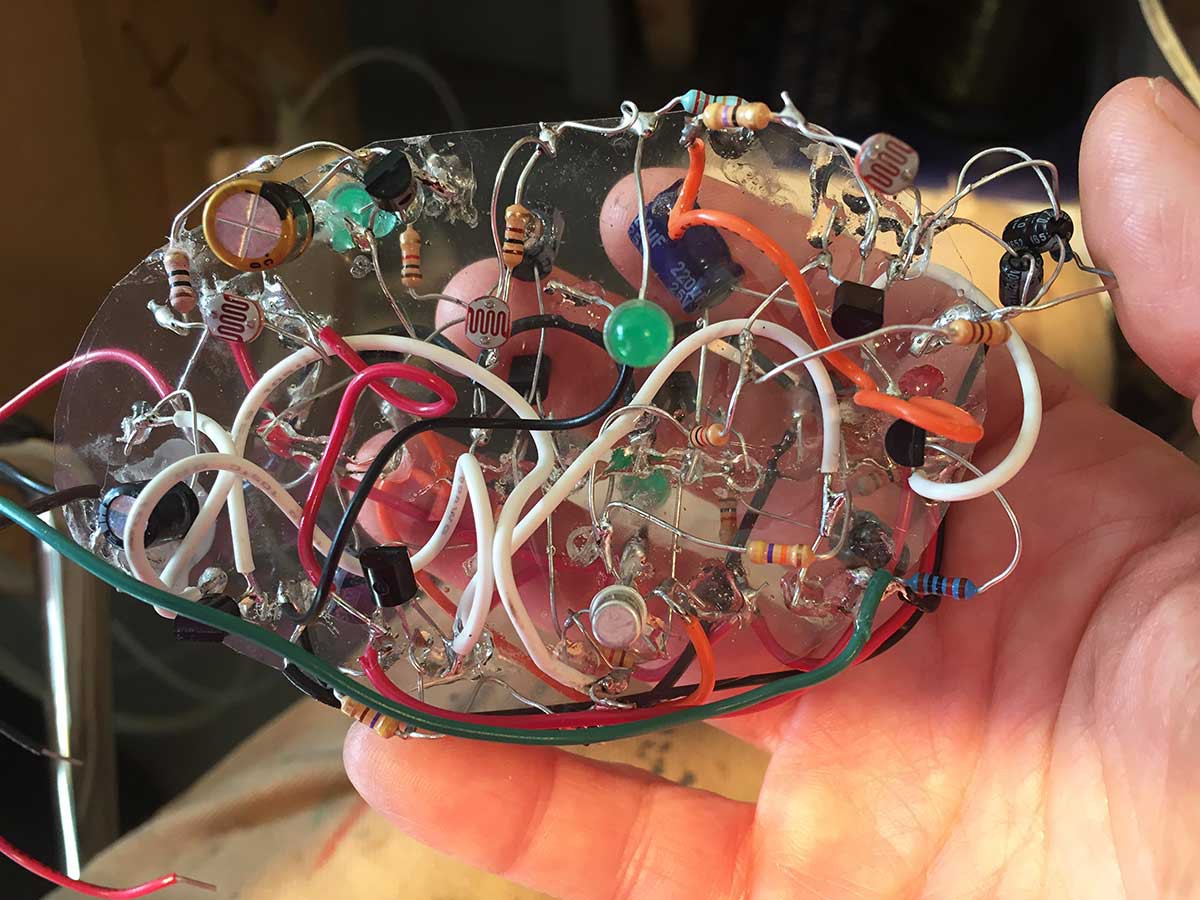 | 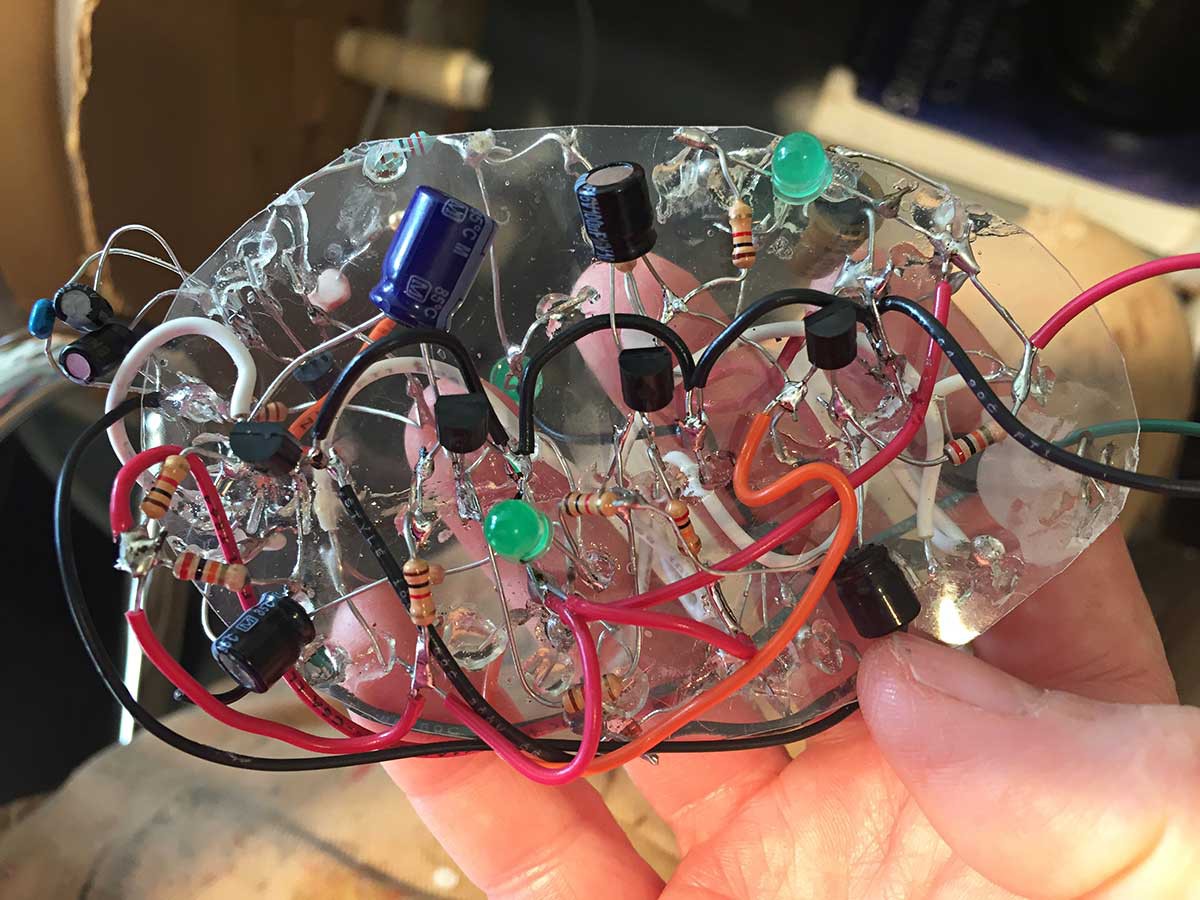 | |
 | 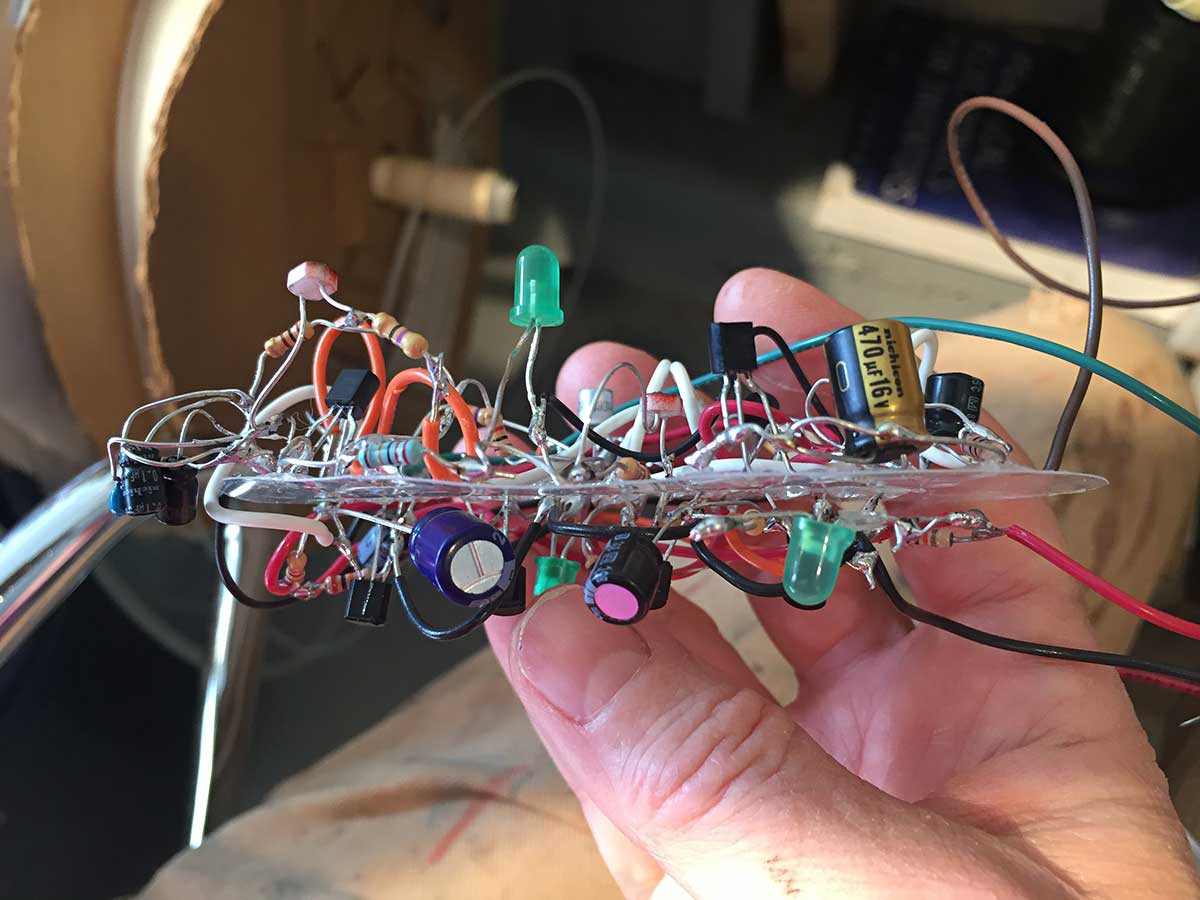 |
Some images of the bird after assembly:
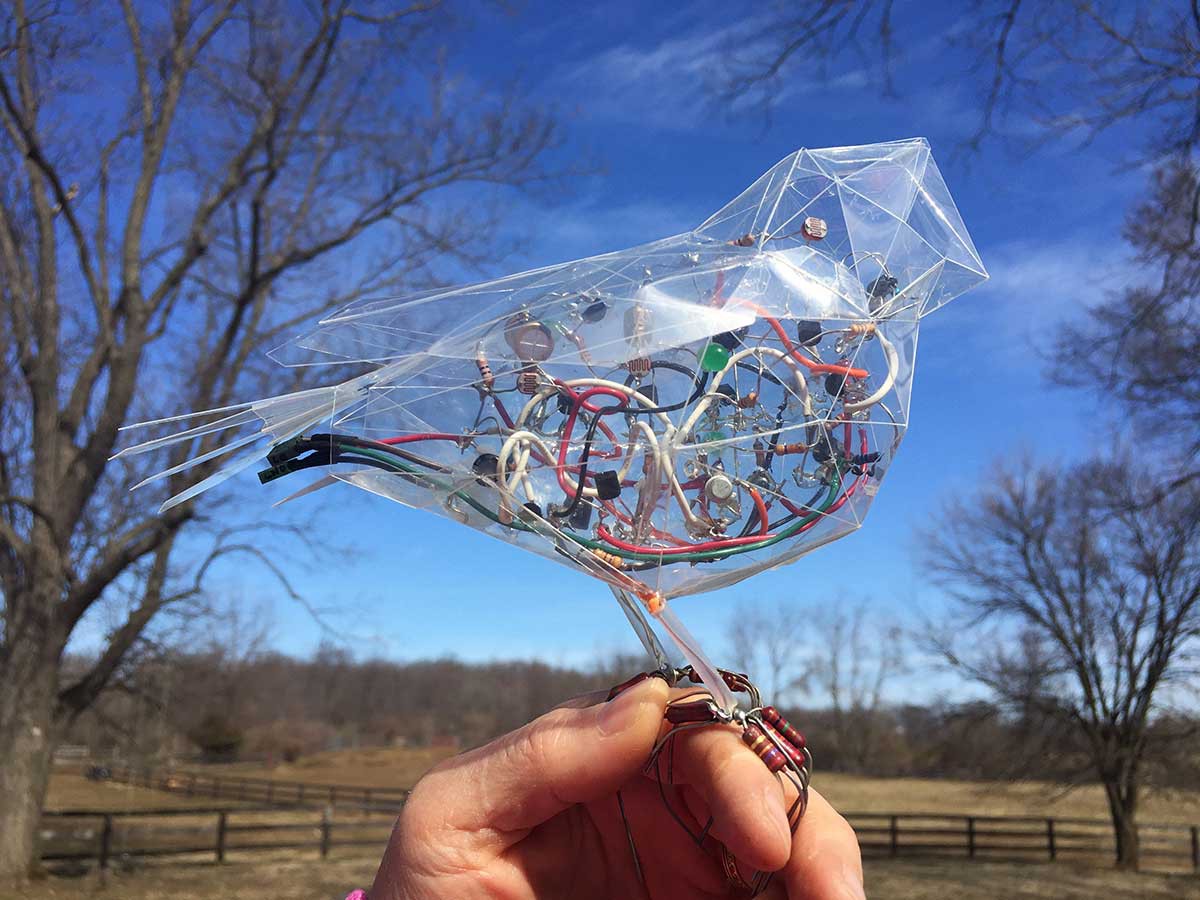
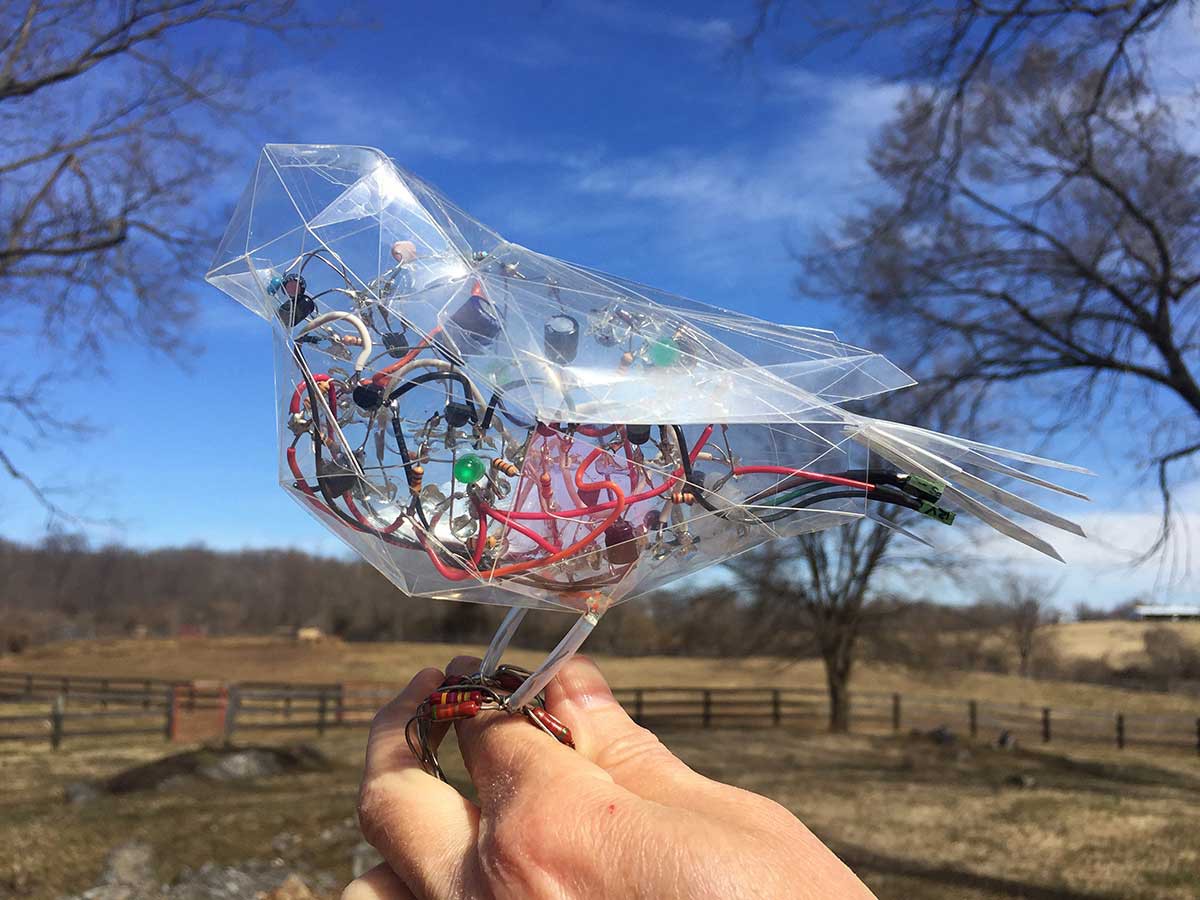

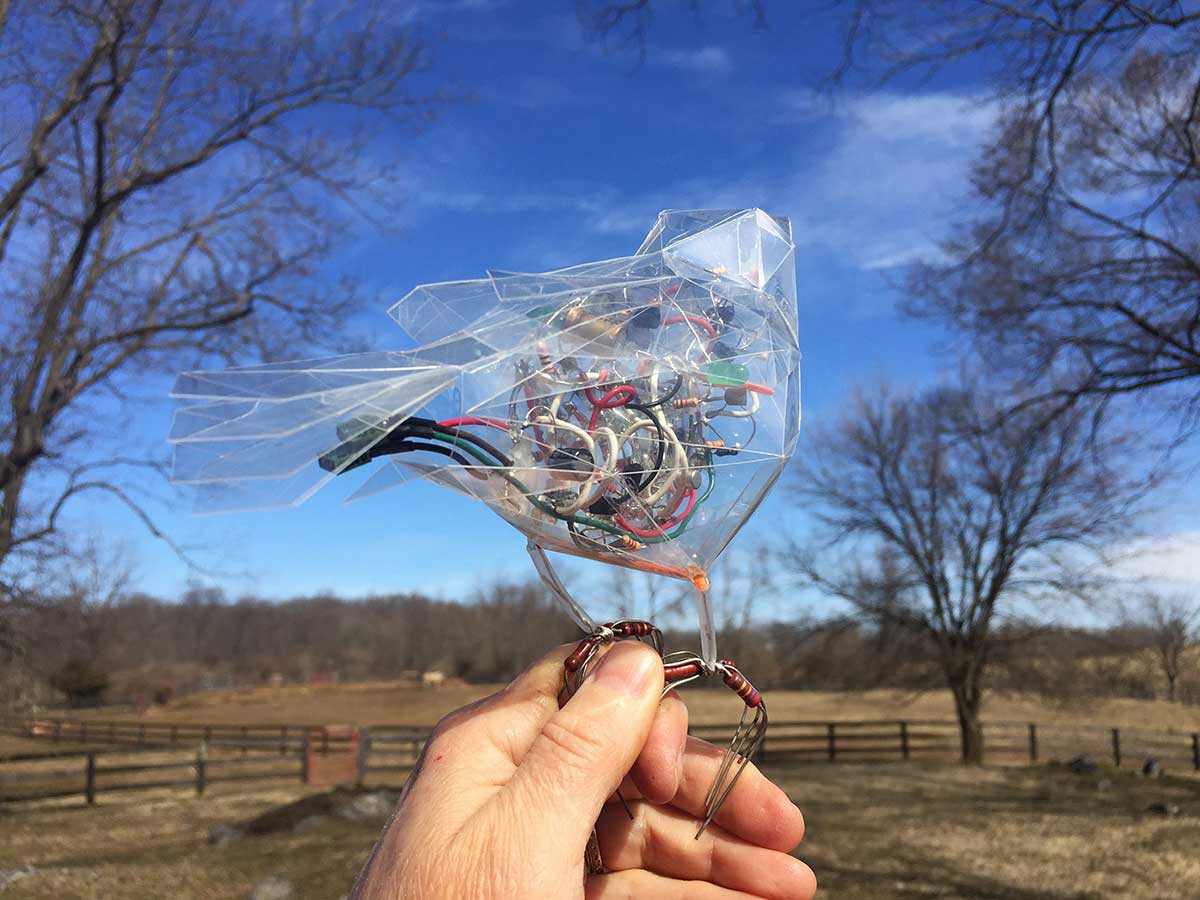
I may turn this sculpture into a kit that you can build yourself. Message me if you'd be interested: info (at) kellyheatonstudio.com
 Kelly Heaton
Kelly Heaton
Discussions
Become a Hackaday.io Member
Create an account to leave a comment. Already have an account? Log In.